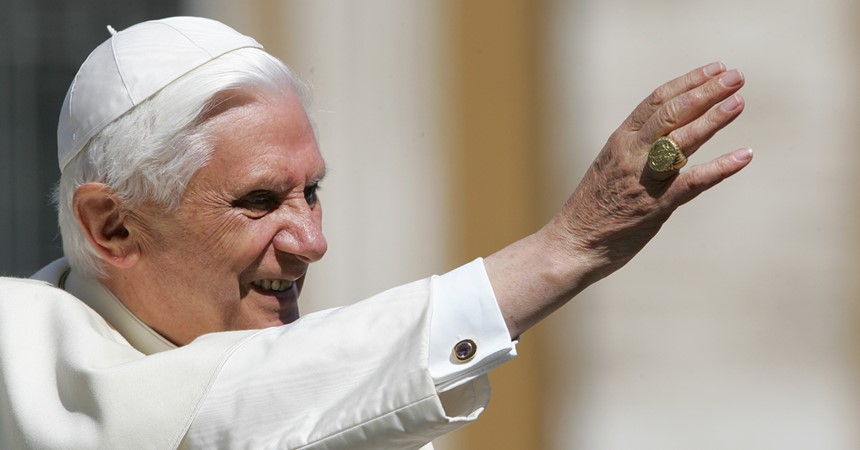When it comes to ornamentation, it's hard to beat the collection the Vatican has built up during more than two millennia - but one very special piece has a limited shelf life: a pope's ring.
The Ring of the Fisherman
The Anulus Piscatoris, or the Ring of the Fisherman, is the ring that the Pope wears on the fourth finger of his right hand. It is a visible sign of his Papal authority and used to seal official correspondence from the Pope.
The Ring of the Fisherman is a gold ring decorated with a depiction of St. Peter in a boat casting his net. Surrounding this image is the name of the reigning pope.
As Vice President of the Roman Guild of Goldsmiths, Claudio Franchi was commissioned to make the ring when Benedict was elected in 2005. He said reports that the ring will be destroyed are a mistranslation of the Italian word "biffatura," which means "to cross out."
The chosen design for Pope Emeritus Benedict’s ring was inspired by a Michelangelo painting. The final concept required more than 200 sketches and coloured drawings. It depicts St. Peter, who was a fisherman, and carries the inscription "Benedictus XVI," the Pope's official title in Latin. The elliptical shape represents the piazza in front of St Peter's Basilica, laid out by the sculptor Bernini in the 17th century.
The ring is 35 grams of pure gold. It took eight artisans working 15 hours a day for two weeks to make it. That adds up to an expensive piece of jewellery, but some things can't be measured in money.
Franchi said: "The value of the time and the gold is nothing. It is effectively annulled by the strong symbolic power and the fact that it has been worn by Benedict XVI and that it tells a story that is a basis of Christian faith."
It is also the product of skills passed on from fathers to sons - and which have been honed over a lifetime. As a Roman goldsmith, Franchi said: a papal commission was "the highest point of my career."
And it was repeated for Franchi, with Pope Francis choosing the same design as the old one, except for the name change.
The Ring and the Emeritus Pope
Benedict XVI holds the unique title of Pope Emeritus. The word Emeritus comes from Latin and means ‘retired’ but is also used to honour the position once held by the retired person.
Once Benedict officially relinquished his papal mitre, he was also required to hand over his ring. The moment symbolised the end of Benedict’s authority and also serves a more practical purpose.
It is a signet ring which is used to officially seal documents and ensure their authenticity.
“This is to make sure no one will forge a document in the Pope’s name after the Pope dies,” said Fordham University of Theology Professor Maureen Tilley.
Upon a papal death, the ring used to be destroyed using a hammer in the presence of other Cardinals by the Camerlengo.
Today, the destruction of the ring's device with deep scratches is a symbol of the end of rule of the pope who used to wear that ring. This custom was followed after the resignation of Pope Benedict XVI by applying two deep cuts, in the shape of a cross, on the signet with a chisel
Kissing the Pope’s Ring
The ring of the former Pope Benedict XVI has been kissed by everyone from heads of state, cardinals and priests to ordinary people from every walk of life and scores of countries.
Catholics kiss the Pope’s ring as a symbolic act honouring the Pope’s service and devotion to God and recognising his spiritual authority.
The first mention of the Ring
The Catholic Encyclopedia notes that the earliest mention of ring worn by popes is in a letter to Pope Clement IV wrote in 1265 to his nephew, stating that popes were to seal their private letters with "the seal of the fisherman."
During the 15th century, the papal ring was also used to seal official papal documents known as briefs.
